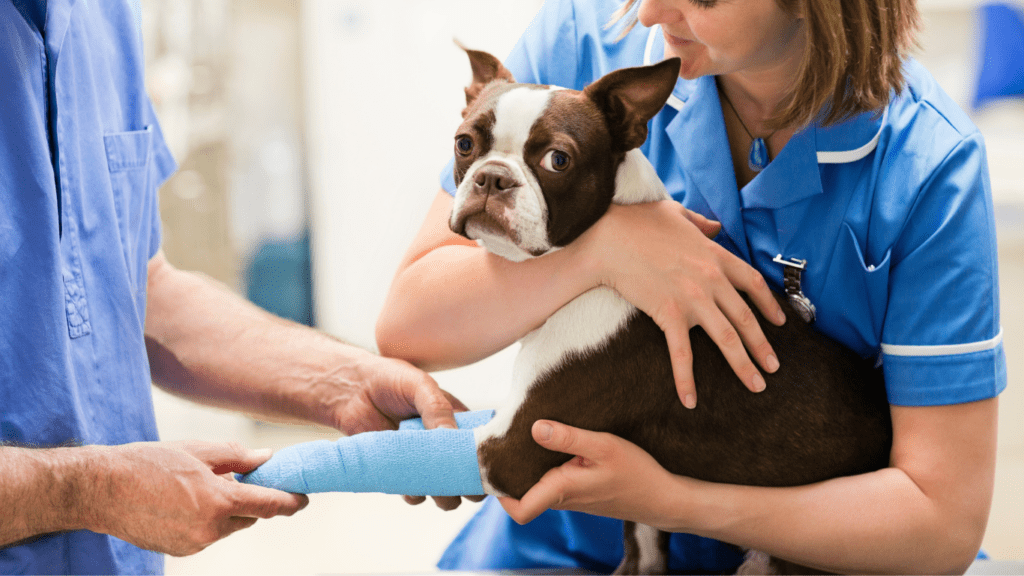Understanding The Recovery Process
Healing following surgery hinges on several critical factors. Recognizing these elements can aid in a smoother recovery journey for your pet.
Healing Timeframes
Different surgeries necessitate various recovery periods. Minor procedures like spaying or neutering may require 1-2 weeks for pets to regain their normal activities. More extensive surgeries, such as orthopedic procedures, might need 6-8 weeks for full recovery.
Monitoring Your Pet
Daily checks on your pet’s incision site are crucial. Look for signs of infection, including redness, swelling, or discharge. If you notice any unusual symptoms, contact your vet immediately. It’s also important to observe your pet’s behavior. Lethargy, lack of appetite, or excessive grooming of the incision area could indicate complications.
Pain Management
Pain management is essential for a comfortable recovery. Vets often prescribe medications to manage pain and inflammation. Follow the vet’s instructions precisely, ensuring your pet receives the correct dosage at the right times. In some cases, vets suggest using additional therapies such as cold packs or gentle massages to alleviate discomfort.
Limiting Activity
Restricting your pet’s movement helps prevent complications. Use crates or designated recovery areas to limit activity. Avoid jumping, running, or any strenuous activities that could stress the surgical site.
Nutrition and Hydration
Adequate nutrition and hydration are vital for healing. Ensure your pet has access to fresh water and provide a balanced diet as recommended by your vet. Some pets may have reduced appetite post-surgery; in such cases, offering smaller, more frequent meals can help.
Follow-up Appointments
Schedule and attend all follow-up appointments. These visits allow the vet to monitor the healing process and address any concerns. Adhere to any additional care instructions provided during these visits to ensure optimal recovery.
Preparing Your Home For Recovery

Your pet’s comfort and safety are crucial during recovery. Making necessary preparations ensures a smooth healing process.
Creating a Comfortable Space
Designate a quiet, comfortable area for your pet to rest. Avoid locations with high traffic or loud noises. Use soft bedding to prevent pressure sores and offer warmth. Ensure the space is large enough for your pet to stretch and move slightly yet small enough to limit excessive activity. Pet gates or crates can help contain the area, especially for larger pets.
Stocking Up on Supplies
Gather necessary supplies beforehand. Essential items include:
- Medications: Ensure prescribed medications are ready for use and stored properly.
- Dressings and Bandages: Have extra dressings and bandages available for wound care.
- Food and Water: Select easily digestible food and ensure fresh water supply.
- Cleaning Supplies: Keep pet-safe cleaning products to handle accidents.
- Comfort Items: Place toys or blankets to provide emotional support.
Having these items on hand reduces stress, allowing you to focus on your pet’s recovery.
Post-Surgery Care Tips
Supporting your pet’s recovery after surgery requires careful attention and consistent care. These post-surgery tips ensure pets heal properly and stay comfortable.
Medication Management
Administer medications as prescribed by your vet, including pain relief and antibiotics. Keep track of dosages and times. Use a calendar or set reminders on your phone. Always give medications with food if it’s required and never skip doses. If side effects appear, like vomiting or lethargy, inform your vet immediately. Store medications safely and out of reach of pets and children.
Monitoring Your Pet’s Health
Check the surgical incision site daily for signs of infection, such as redness, swelling, or discharge. Note any changes in your pet’s behavior or appetite. If your pet seems excessively tired, doesn’t eat, or shows signs of discomfort, contact your vet. Measure your pet’s body temperature using a digital thermometer; normal temperature ranges between 100.5°F and 102.5°F. Document any unusual symptoms to report them accurately during follow-up appointments.
Managing Activity Levels
Limit your pet’s physical activity to prevent strain on the surgical area. Use a leash during bathroom breaks and avoid stairs. Set up a confined area with enough space to move comfortably but restrict running or jumping. Engage your pet mentally with toys or treats to prevent boredom. Gradually reintroduce physical activity based on your vet’s recommendations, usually starting after the initial post-surgery period (about two weeks for most procedures).
These care tips are integral to helping pets recover smoothly and fully after surgery. Proper medication management, vigilant health monitoring, and controlled activity levels create a foundation for successful healing.
Dietary Considerations
Attention to diet is important during your pet’s recovery after surgery. Special diet needs and hydration tips can help support their healing process effectively.
Special Diet Needs
Certain pets require specific dietary modifications post-surgery. Soft or wet foods are often easier for pets to digest and can encourage better eating habits during recovery. If the vet recommends it, a high-protein diet aids in tissue repair and muscle maintenance. Prescription diets might also be necessary for specific conditions or surgeries. Avoid giving treats or foods not approved by the vet to prevent complications.
Hydration Tips
Maintaining proper hydration is vital during recovery. Ensure fresh water is available at all times. If you’re concerned about your pet’s water intake, consider offering ice chips or wet foods with higher moisture content. Monitor the pet’s hydration status by checking their skin elasticity and observing for signs of dehydration like sunken eyes or dry gums. Consult the vet if hydration remains a concern.
Emotional Support For Your Pet
Pets need emotional support after surgery for a smooth recovery and reduced stress.
Reducing Stress
Minimize noise and activity around your pet’s recovery area. Avoid loud noises like vacuum cleaners or loud conversations. Familiar items like toys and blankets can help create a comforting environment. Monitor for signs of stress such as panting, pacing, or whining. Offer gentle petting if they seem anxious. Use calming aids like pheromone sprays or diffusers to promote relaxation.
Enhancing Your Bond
Spend quality time with your pet to strengthen your bond. Gentle activities, like slow-paced walks or quiet time together, can be beneficial. Speak softly and reassuringly to your pet to provide comfort. Praise and positive reinforcement can make them feel secure. Consistent routines for feeding, medication, and walks contribute to their sense of security.
Warning Signs to Watch For
Pets may show various signs post-surgery that require immediate attention. Being vigilant can ensure timely intervention.
When to Contact the Vet
Certain symptoms indicate the need to contact your vet. Observe for:
- Persistent Vomiting: If vomiting lasts over 24 hours.
- Loss of Appetite: If your pet refuses food for more than two days.
- Lethargy: If extreme tiredness or weakness persists beyond 48 hours.
- Swelling: If the surgical site swells significantly or exudes discharge.
- Breathing Trouble: If your pet shows difficulty breathing or coughing.
Recognizing Complications
Monitor for complications that warrant urgent action:
- Infection Signs: Red, hot, or swollen incision sites.
- Uncontrolled Pain: If your pet constantly whines or acts distressed.
- Behavior Changes: Sudden aggression, hiding, or avoiding movement.
- Poor Wound Healing: If incisions aren’t closing or tearing open.
Detecting these signs and acting promptly can significantly benefit your pet’s recovery process.



 Lead Pet Behavior Specialist
Brian Camacho is an expert in pet behavior and training at Pet Paw Shack. With a deep understanding of animal psychology, he specializes in helping pets and their owners build strong, healthy relationships through positive reinforcement techniques. Brian’s innovative approach to training focuses on making behavior modification a fun and rewarding experience for both pets and their families.
Lead Pet Behavior Specialist
Brian Camacho is an expert in pet behavior and training at Pet Paw Shack. With a deep understanding of animal psychology, he specializes in helping pets and their owners build strong, healthy relationships through positive reinforcement techniques. Brian’s innovative approach to training focuses on making behavior modification a fun and rewarding experience for both pets and their families.
